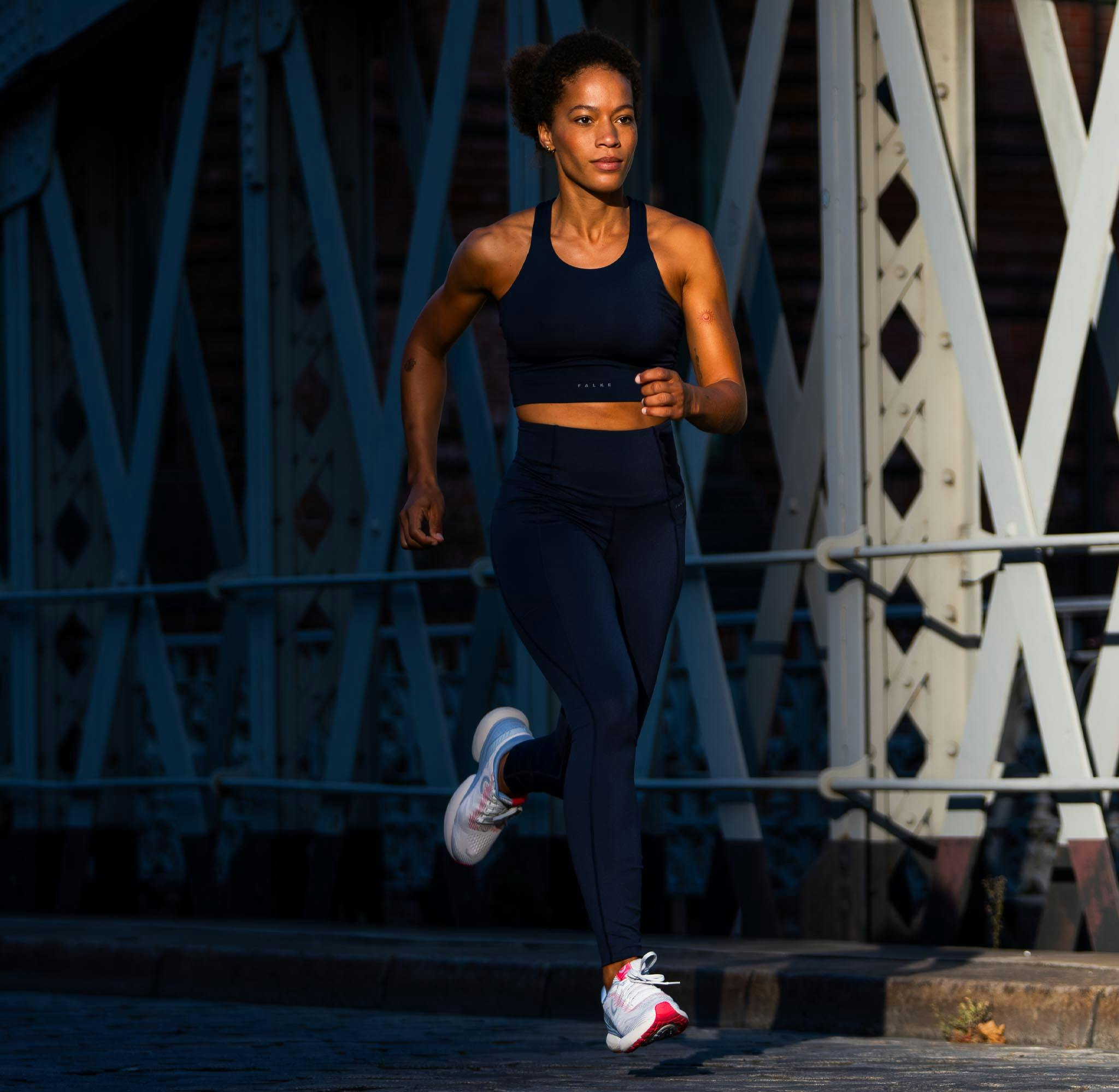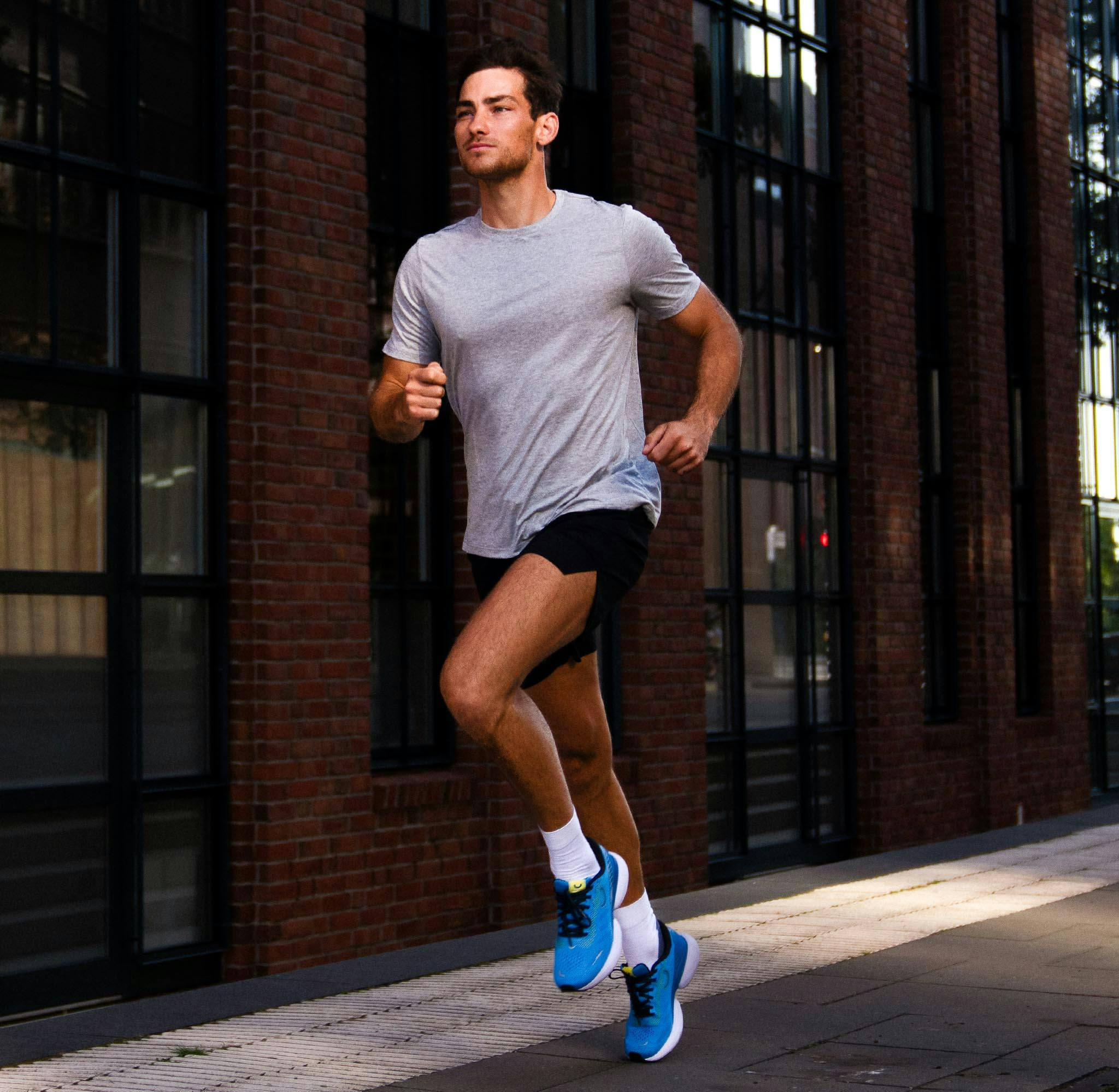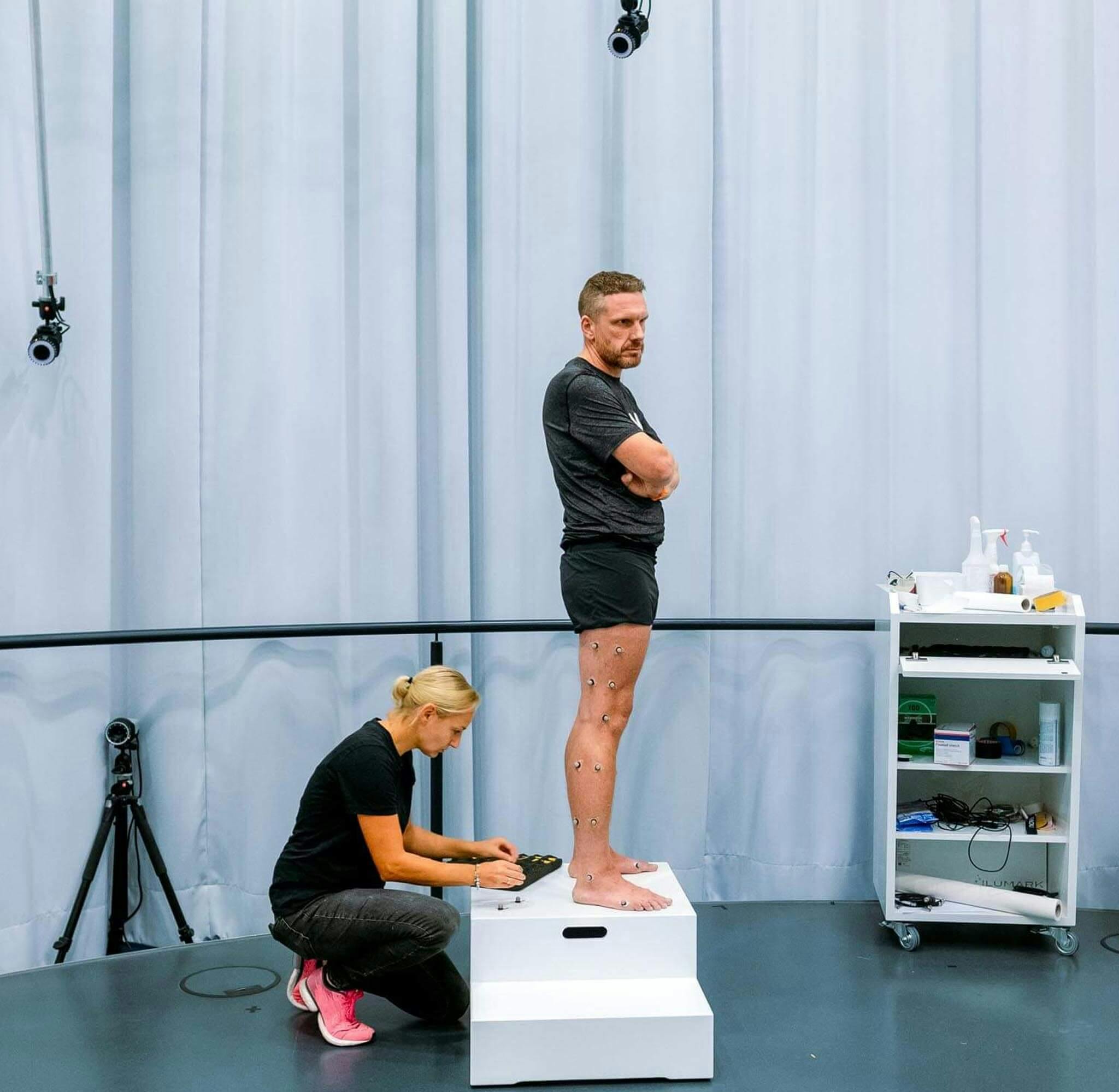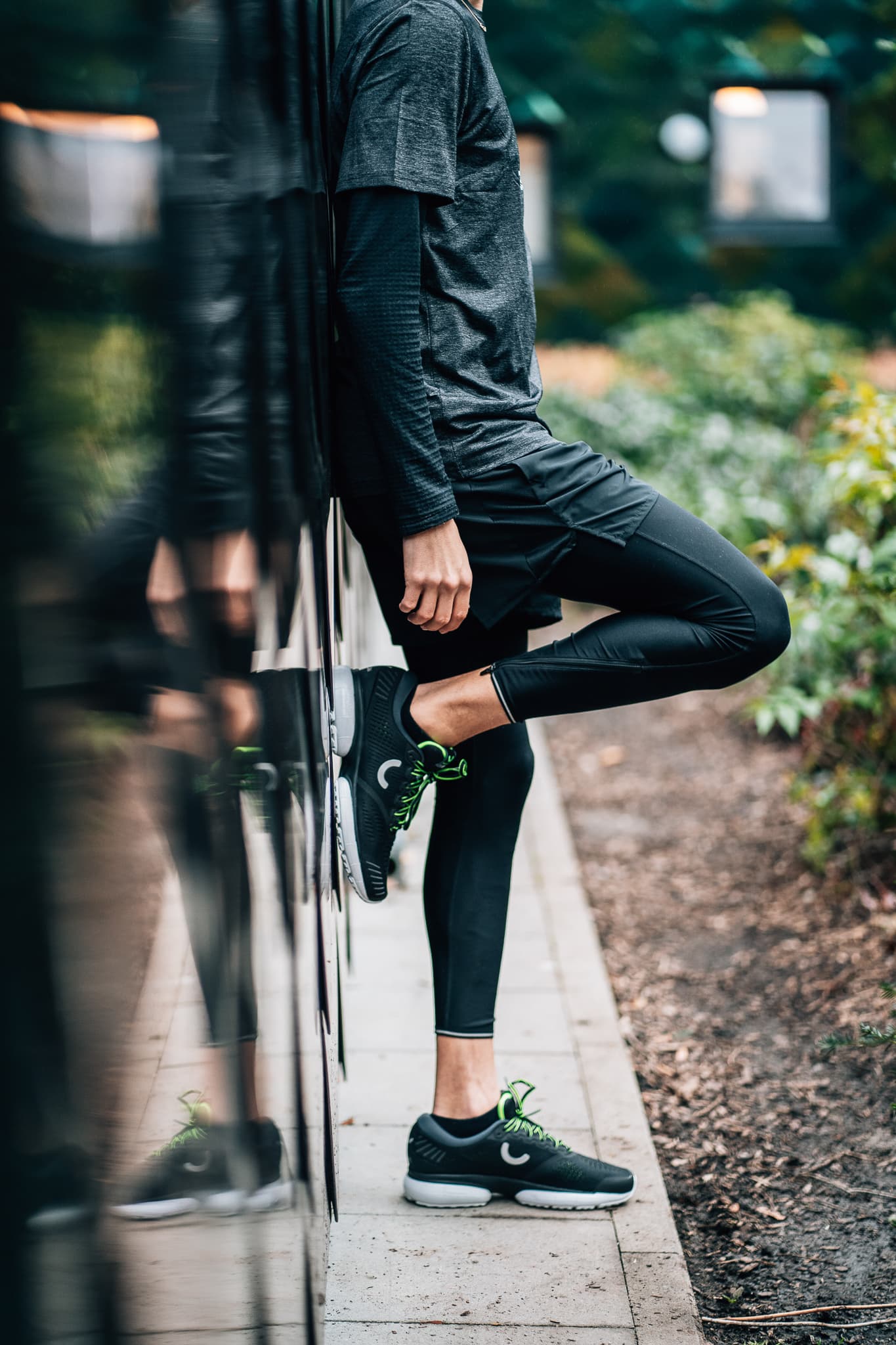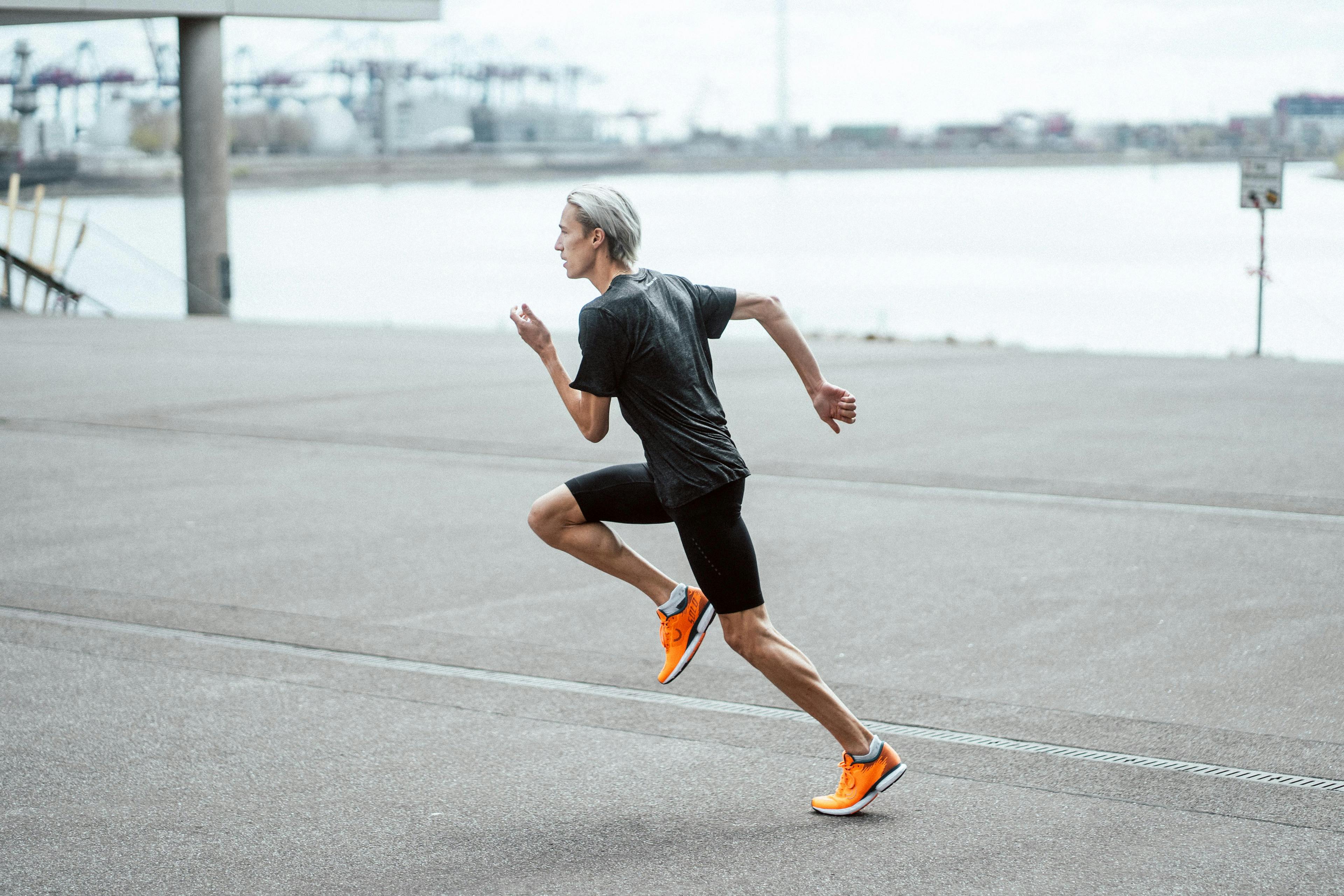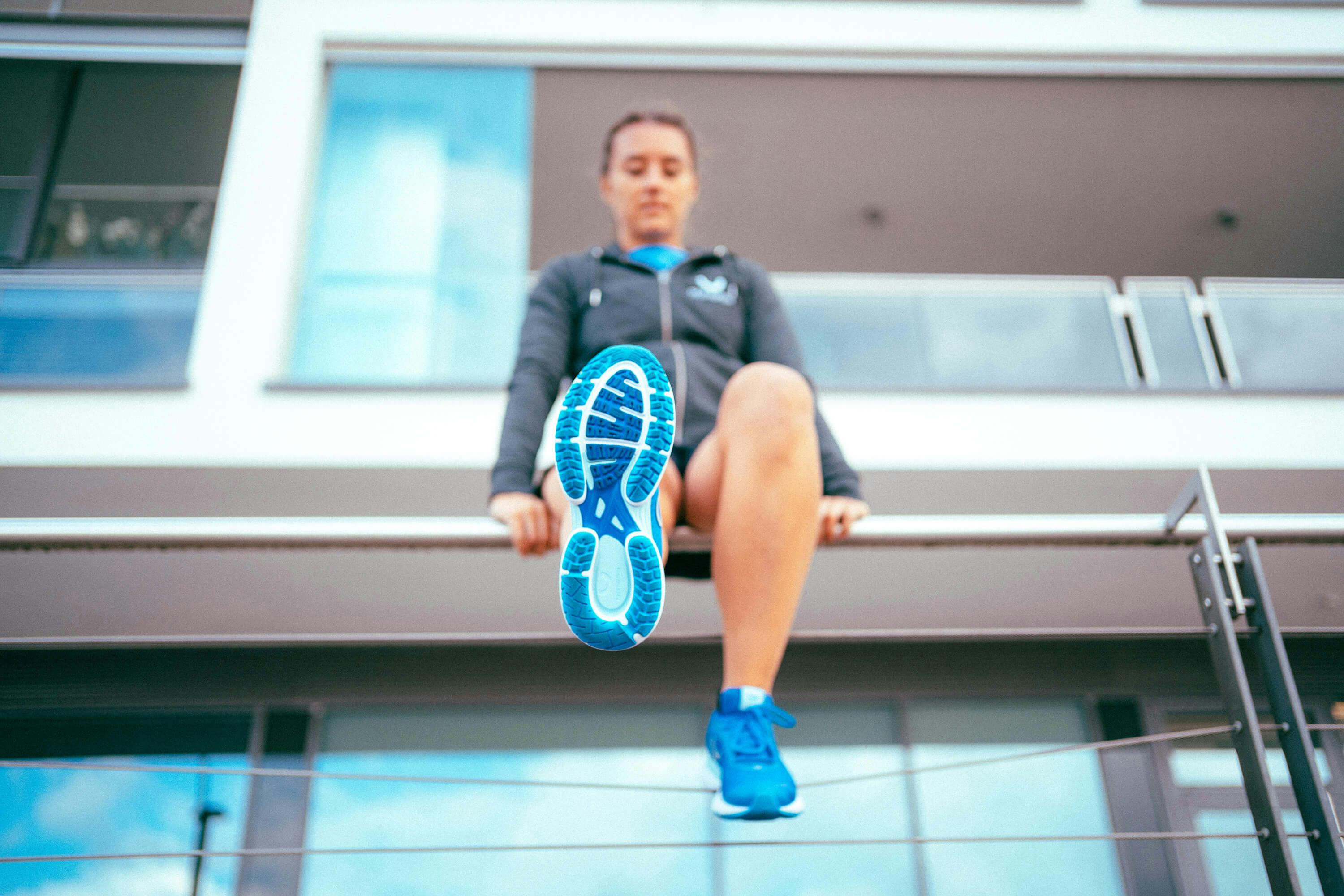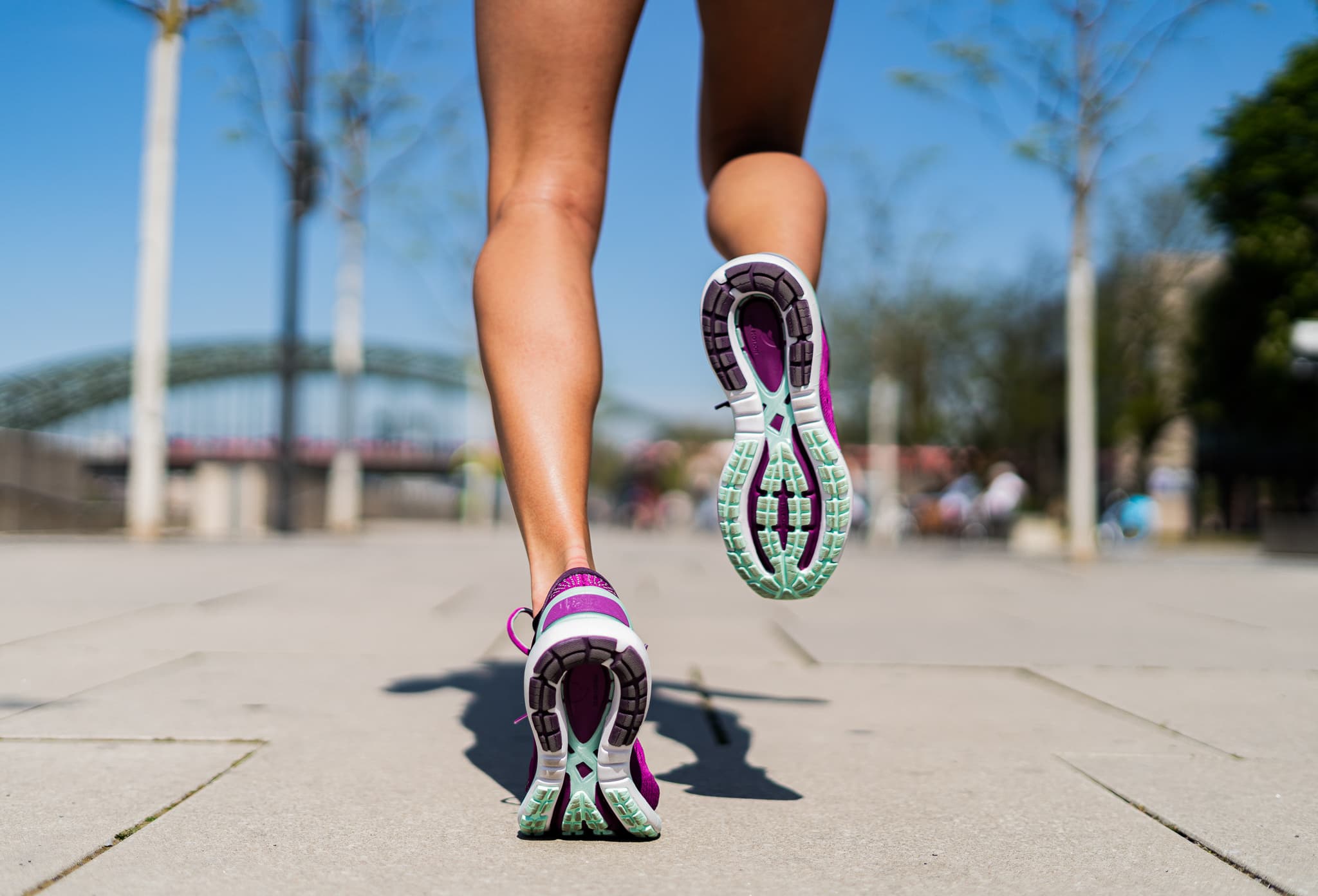
If the Achilles Tendon Hurts When We Run – Is It Achilles Tendinitis?
10th September 2021
Actually, we love running – if it weren’t for this constant, burning pain in the heel. The so-called Achilles tendinitis (also: Achillodynia) is a widespread problem among runners. They often complain about discomfort even in the calf muscles. The result: training is difficult, the Achilles tendon is a burden. But how does Achilles tendinitis actually develop and is there a therapy? Prof. Dr. Gert-Peter Brüggemann explains the role of biomechanics in Achillodynia – and what can trigger the painful inflammation.
Content:
You can lift a small car with it: the Achilles tendon
Diagnosis Achillodynia: these symptoms speak for an Achilles tendinitis
Understanding the biomechanical causes of Achillodynia: what is happening in our body?
These factors increase the overload of our Achilles tendons
Treatment of Achilles tendinitis: surgery not necessary
Achilles tendinitis is one of the most common sports injuries. It’s no wonder that almost all of us have complained of pain in the heel area at some point. About every tenth person who runs into us knows the discomfort in the Achilles tendon all too well – as soon as we start running, the heel suddenly stings and twinges. For years we’ve had no problems on our weekly run. The problem is that Achilles tendinitis is treacherous. It is often easy for us to ignore the symptoms, especially when the discomfort first occurs. However, despite only slight pain in the beginning, constant training slowly and silently increases the inflammation of the Achilles tendon.
But what is the reason that all, of a sudden, we are no longer able to handle this discomfort? “The Achilles tendon is like a tightrope,” is how Prof. Dr. Gert-Peter Brüggemann, biomechanics expert and co-founder of True Motion, describes this phenomenon. “We can bend a wire rope like that once, we can bend it a hundred times. But if we do it too often and nonstop, eventually the wire will give up – and break.”
In order to avoid inflammation of our Achilles tendon, we need to know how to what extent we can strain it. Because this is often exactly where the causes lie – and the answers can be found in the biomechanics of our body.
You can lift a small car with it: the Achilles tendon
Achilles tendinitis is a painful irritation of the Achilles tendon. In technical jargon, this condition is called Achillodynia; a combination of “achillo”, meaning the affected tendon, and “dynie”, meaning pain.
As the name suggests, Achillodynia affects the Achilles tendon. This tendon in the heel area is about as wide as two adjacent fingers – and thus the strongest tendon in our body, explains Prof. Brüggemann. The Achilles tendon is a real powerhouse. It is so strong that we could hang a small car on it at rest without it tearing. The 20 to 25 cm long Achilles tendon connects the heel bone, the rearmost bone of the foot, with our calf muscles and the thigh.
Transferring the power from the muscles to our foot and toes is thus the main task of the Achilles tendon. Only thanks to it can we stretch our feet. And this is important at every single step. Thus, especially when running, our Achilles tendon has real work to do. Because when we run, the tendon has to “withstand and cushion about five to six times our body weight,” says biomechanist Brüggemann. In the long run, this enormous dynamic load can overstrain and injure even the strongest tendon. It starts to hurt. The diagnosis: Achilles tendinitis.
This occurs due to a constant strain and strong pull along the tendon. As a result, small tears occur in the structure, comparable to those in a porous rubber band. In most parts of the body, our body starts its own healing process at this point of inflammation. The Achilles tendon is not so good at this because it comes with a decisive disadvantage: the blood supply to the tendon is quite poor. Blood, however, is important for initiating the body’s own therapy and the associated healing process. In the end, it is our blood that carries nutrients to the affected area and waste products away from it.
The natural, limited ability of the Achilles tendon to heal itself is juxtaposed with the constant overuse injuries. Thus, over time, the tendon reaches its limits. Ultimately, this is precisely the reason why most runners only develop Achilles tendinitis after a long and pain-free period.
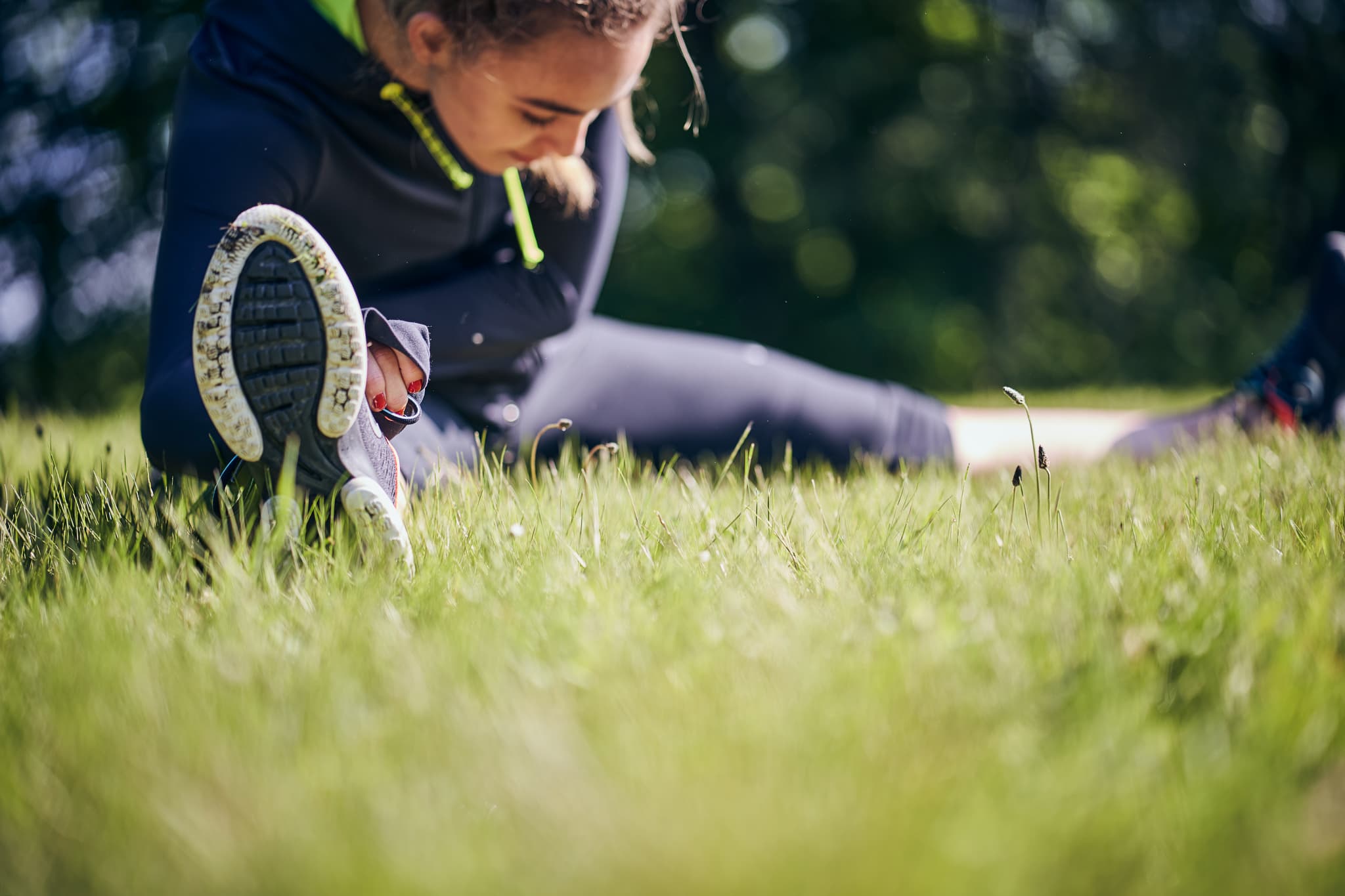
Diagnosis Achillodynia: these symptoms speak for an Achilles tendinitis
The typical symptom of Achilles tendon irritation is first and foremost the pain that occurs when we put weight on our feet and legs. If we suffer from acute inflammation of the Achilles tendon, we will feel burning pain in the area of our heel even during the first few meters of running. This can quickly cause us to lose the desire to run after just a few steps.
In principle, this is a protective function of our body. Because while the inflammation is still fresh, the pain often disappears after a short time – sometimes even during exercise. It is not uncommon for runners to think that they can outrun their pain. But this thought is fatal. If the inflammation has taken up residence in the tendon, the painful burning sensation disappears neither during running nor shortly afterwards. The tendon in the heel usually continues to hurt for many minutes even after we have stopped exercising.
Other symptoms of an inflamed Achilles tendon include redness and swelling in the affected area. When patients press on their tendon, they feel an unpleasant stabbing pain – but usually only on one side. It is particularly painful for those affected if not just one, but both Achilles tendons are inflamed. Sport then becomes torture. Heel spurs and plantar fasciitis are often the consequences of an inflamed Achilles tendon.
Understanding the biomechanical causes of Achillodynia: what is happening in our body?
If we want to understand the clinical picture of Achillodynia, we have to look at its natural origin – human biomechanics. This is exactly the field of expertise of Gert-Peter Brüggemann. He knows the natural dangers that can ultimately lead to an inflammation of the Achilles tendon; the whip effect and tendon twisting.
The whip effect: most runners put their foot down heel first. “In the process, the Achilles tendon stretches like a bow,” explains biomechanist Brüggemann. This is not a problem at first – but it can quickly become one.
Whenever runners are about to roll over their foot and the toe of their foot tilts, there is a tiny moment when there is no tension on the Achilles tendon. That changes when the rolling starts. Abruptly, our Achilles tendon becomes tense – and an enormous pulling force is created. “Figuratively speaking, we can imagine it like the movement of a whip,” says Prof. Dr. Brüggemann. This whip effect ultimately causes extreme strain on our Achilles tendons – and can damage them in the long run.
The tendon twist: our Achilles tendon consists of three strands. Like a rope, these are twisted into each other – because this is the only way the tendon can withstand the acting forces under stress. These three strands, in turn, are connected to different muscles. “This leads to them being subjected to different levels of stress,” explains biomechanics professor Brüggemann.
It is precisely this natural interaction that is problematic when the foot strike is not centered. Then the muscles pull on the tendon cords with varying strength. Sometimes we can even hear what happens; the cords rub against each other and damage the Achilles tendon in the long run. An Achilles tendinitis can be the result.
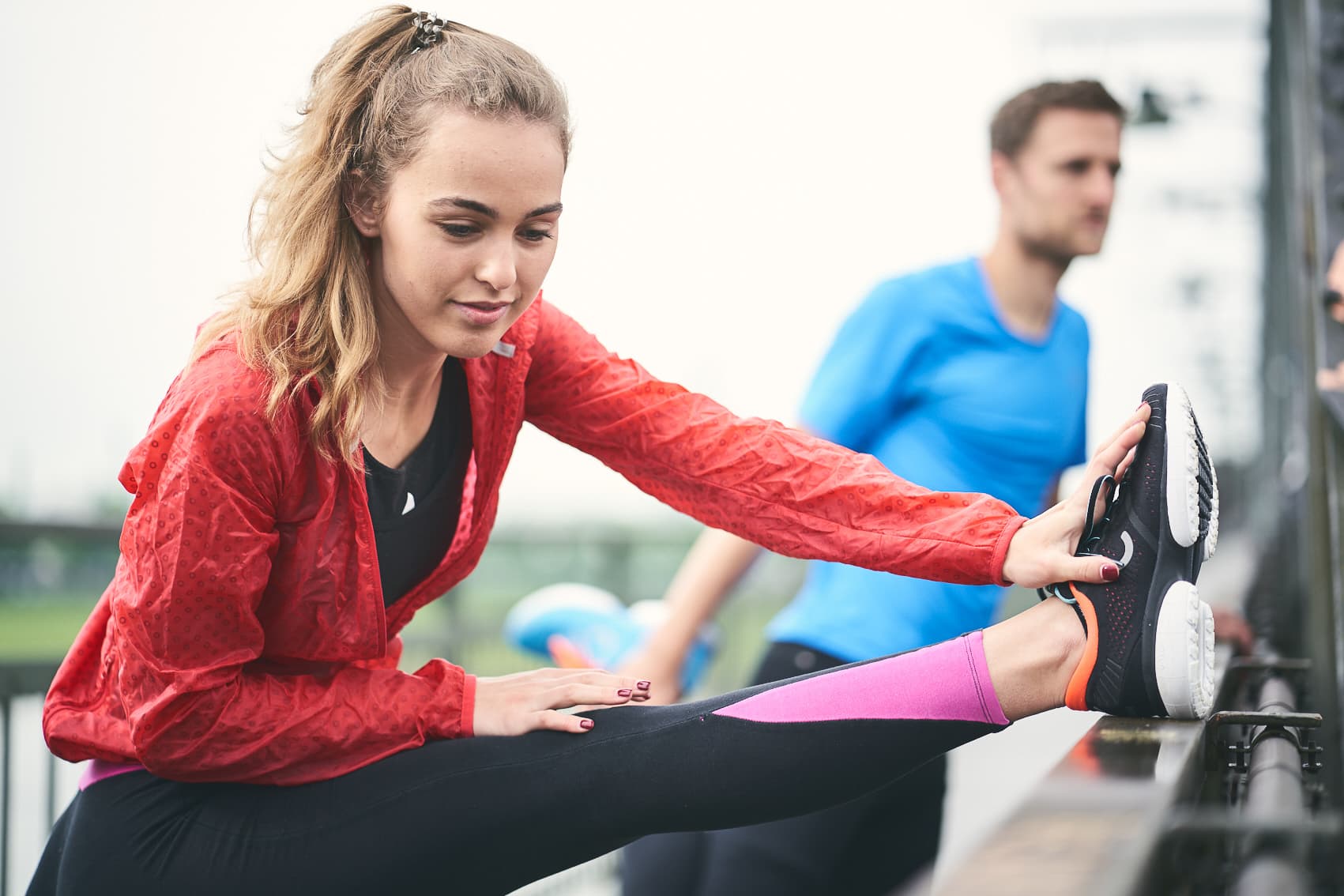
These factors increase the overload of our Achilles tendons
Achilles tendinitis occurs when we overload our fascia. This is often the case when we exercise too intensively. But this is not always the cause behind Achillodynia. There are several factors at once that influence our biomechanical musculoskeletal system and thus increase the natural tension on our Achilles tendon:
Training condition: Like our entire body, our Achilles tendon learns over time. We can therefore train it. Conversely, however, this means that untrained athletes risk Achillodynia more quickly. That’s why we should always adapt our load to our training condition.
Regeneration period: It is quite normal for small hairline cracks to form in our tendons after an intensive workout. That’s why it is even more important to give our tendons enough time to recover. This is especially true for our Achilles tendon. After all, its poor blood supply prevents a rapid healing process. Too short a break is therefore particularly problematic for the body’s own therapy.
Type and intensity of stress: A short walk on the weekend is much less demanding on our Achilles tendon than our weekly running session or sports in which we move in leaps and bounds. This does not mean that we should avoid such sports – on the contrary. However, we should make sure that we give our tendons plenty of rest and consciously regulate our training sessions.
Age: With age, the speed of our body’s processes decreases. This is biological and quite normal. For us, however, this means that the already slow regeneration of the Achilles tendons slows down even more with age. Thus we can overstrain our tendon even faster.
Weight: With every step, our Achilles tendon absorbs our entire body weight. This extreme force is increased many times over when we run. Thus, it seems only logical that our weight plays a decisive role in how much strain we put on our Achilles tendon during sports. Ultimately, each additional kilogram brings our tendon closer to its overload limit. Nevertheless, even people who are overweight can go running. However, they should take special care to regenerate sufficiently between their training sessions.
Unsuitable running shoes: Especially our Achilles tendons suffer from worn down or low-quality running shoes. A good running shoe helps to optimally absorb the high force impulses during our running session. And that’s important, because when we run, up to six times our body weight acts on our tendons. If a running shoe does not fit us properly or is already worn out, it can no longer protect us from these forces. Our Achilles tendon surrenders.
Runners with shortened calf muscles in particular struggle with this problem. Here, running shoes with a low offset can cause pain due to the strain on the Achilles tendon. If this is the case, it helps to stretch the Achilles tendon. Such a stretching exercise can look like this: We stand on a stair tread with the forefoot, lowering the heel as far as we can. We hold this position for about 30 seconds.
Treatment of Achilles tendinitis: surgery not necessary
When the Achilles tendon is acutely painful, it calls for a break. And we should give it a break. After all, Achillodynia is a classic overuse condition. The best therapy in acute cases is therefore to give the Achilles tendon time to recover. Additionally, it helps to cool a swollen tendon with a cold pack after running. To avoid burning ourselves during treatment, we should wrap the cold pack in a towel before placing it on the affected tendon. This helps to alleviate the swelling.
If Achillodynia causes Achilles tendon pain after running, surgery is not necessary. Instead, patients can support their recovery with stretching and strength exercises. Sports and physical therapists show us helpful exercises.
How can we prevent Achilles tendinitis in the long term?
If we have already suffered from Achillodynia, the first thing we should do is research the cause. Because if we constantly expose our Achilles tendon to too much or the wrong kind of stress, the inflammation will continue to return. If we are affected by Achilles tendinitis, a small change is usually enough. Prof. Dr. Gert-Peter Brüggemann is certain that in most cases a change of running shoes can remedy the cause.
For example, biomechanically developed running shoes reduce the whip effect and tendon twisting. True Motion’s U-TECH™ technology optimally distributes and centers forces during foot strike thanks to its soft, U-shaped sole. This reduces the leverage forces. As a result, the pull on the Achilles tendon remains even – and the whip effect is reduced by 40 to 50%, explains biomechanist Brüggemann.
Another benefit of U-TECH™ technology is the centering the foot which prevents the tendon cords from twisting. The force centering reduces the stressful leverage forces. As a result, the muscles pull evenly on these three strands, which now rub against each other less.
In addition, the external friction on the Achilles tendon should also be as low as possible in the long term. For this very reason, it is important that the foot has neither too much nor too little room in the running shoe. A soft back of the shoe adapted to the tendon can reduce these frictional forces.
A large-scale study showed that this is how True Motion running shoes put an average of 10% less stress on runners’ Achilles tendons compared to traditional neutral and stability shoes.
DISCOVER RUNNING SHOES
FROM TRUE MOTION

NEVER RUN OUT OF
NEWS
Discover all True Motion stories – and be the first to hear about new products, promotions and events. Simply, center your run!
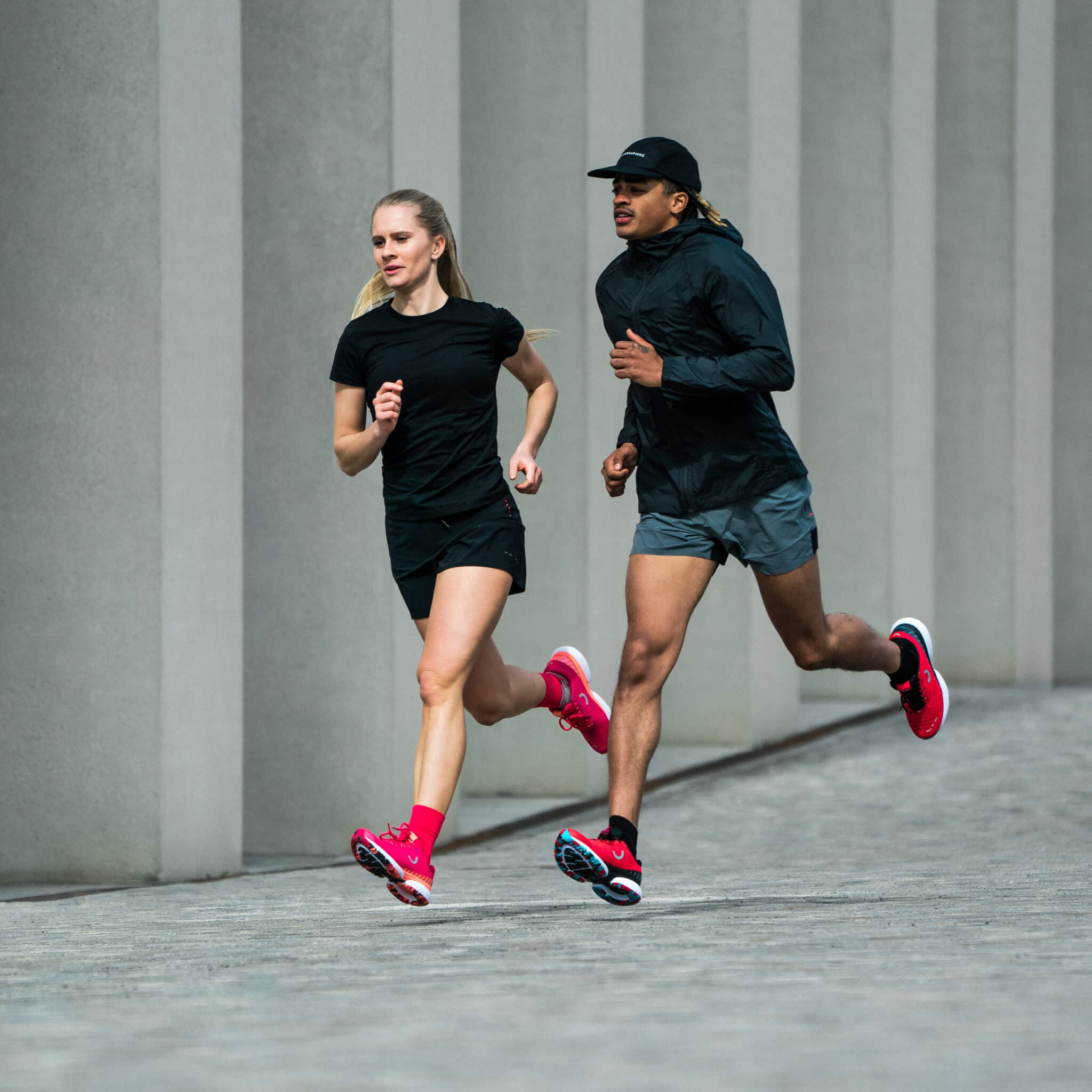
NEVER RUN OUT OF
NEWS
Discover all True Motion stories – and be the first to hear about new products, promotions and events. Simply, center your run!
READ THE NEWEST
U-RUN STORIES
Sabrina Mockenhaupt: This shoe got me running again
2025-10-31

Sabrina Mockenhaupt has achieved everything that many runners dream of. Running was and is her life, until the pain eventually became too much. Today, she is running pain-free again – this is her story.
Laura Schmidt: I have rediscovered running for myself
2025-03-07
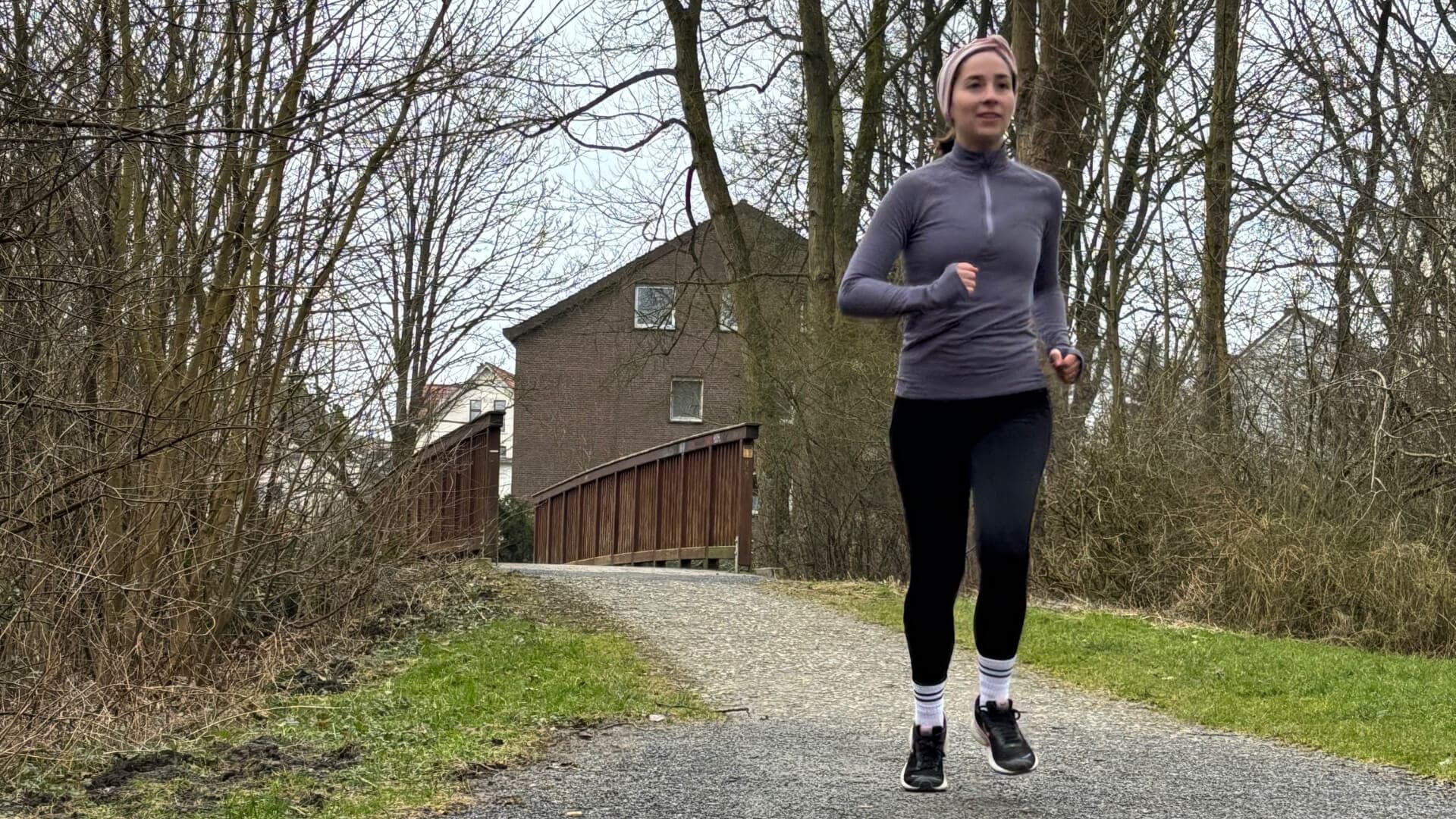
My name is Laura. I started running eight years ago – to clear my head after work. But knee pain kept me from being able to run regularly. A new pair of running shoes was finally the solution. Today I run pain-free. This is my true runner story.
READ THE NEWEST
U-RUN STORIES
Sabrina Mockenhaupt: This shoe got me running again
2025-10-31

Sabrina Mockenhaupt has achieved everything that many runners dream of. Running was and is her life, until the pain eventually became too much. Today, she is running pain-free again – this is her story.
Laura Schmidt: I have rediscovered running for myself
2025-03-07

My name is Laura. I started running eight years ago – to clear my head after work. But knee pain kept me from being able to run regularly. A new pair of running shoes was finally the solution. Today I run pain-free. This is my true runner story.
RECOMMENDED BY








RECOMMENDED BY








GET 10 % OFF YOUR FIRST ORDER!
Get your personal running updates with exclusive discounts, product news, training plans and tips for healthy running - straight to your inbox. 10% discount on your next order.
SERVICE
ABOUT US
© 2025 True Motion Running GmbH

